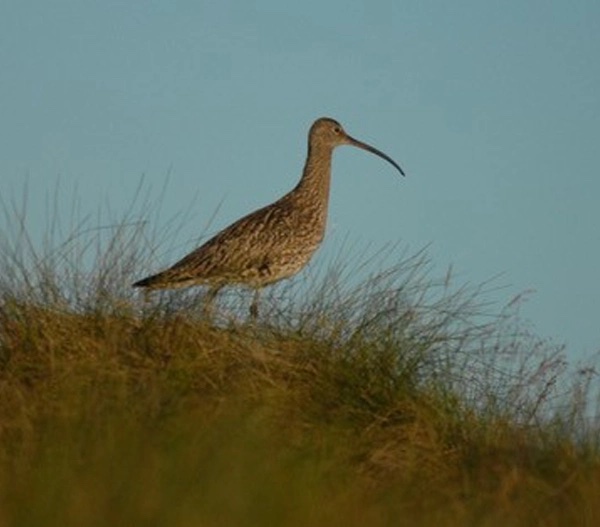Curlew
- Home
- Why We Do It
- Conservation
- Curlew
Key Facts
- Winters on coasts
- Nest in shallow hollows, lined with grass
- 4 eggs, 1 brood, April – July
| Scientific Name: | Numenius arquata |
| Number in Britain: | 58,000 breeding pairs |
| Conservation Status: | |
| in UK | Red |
| in Europe | Vulnerable |
| Globally | Near Threatened |

The largest of the waders which breed in this country the Curlew arrives a little later than the Lapwing in readiness for breeding.
Although the bird is in sharp decline nationally we have very high densities of Curlew on both of our reserves, especially Lintzgarth.
The Curlew’s plumage is mid-brown serrated with very dark stripes and it’s most notable feature is the long curved bill it uses to probe to find it’s food in soft earth or mud.
In keeping with all waders, the female lays four buff-coloured eggs with brown/black marking on them. They are in keeping with the bird large eggs laid in a well-made cup lined with dead grass often in a grass tussock.
The Curlew is most often seen and heard when alarm calling when it has young on the ground.
